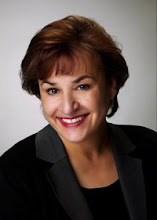Good day dear Readers
The issue of Bioidentical Hormone Replacement had come up again and again. Here in South Florida it is touted as a feel good, safe option and antiaging, youth enhancing, and general good for you regimen.
There is a webinar called "The Buzz on Bioidenticals" that is a good but somewhat biased resource. It presents the facts regarding bioidentical hormone replacement, and why practitoners like transdermal preparations. It was developed by a group called "the Red Hot Mamas" and Dr.Elizabeth Lee Vliet.
I found the discussion informative but biased against compounding pharamacies.
The truth is of course, always somewhere in the middle.
Both FDA approved and compounding pharmacies dispense bioidentical hormone replacement. Until I arrived in South Florida, the need to prescribe compounded products was almost negligible. It seems to be local custom to get creams and gels from the compounder instead of the pharmacy. Not a problem for me, but buyer beware. The compounding pharmacist uses the same precursor ingredients as the phamaceutical industry, and is regulated by your individual State Board of Pharmacy. They are not compounding roots and berries. These products are essentially all from plant source originally.Any preparation that is compounded does not get you the FDA required information regarding side effects, risks and benefits. Many women interpret this as it must be "natural and safe". No, it is a drug and has the same risks and benefits as FDA monitored medication.
Depending upon your global location, you will have estradiol( E2), and progesterone available to you. Estrone (E1)is a weak estrogen that is not usually secreted until after menopause, it is biologically mostly inactive. Estriol ( E3) is another estrogen made by the placenta during pregnancy. Neither of these is necessary as a postmenopausal hormone. They are often combined with estradiol in compounds, but are unnecessary.
Estradiol is the predominant estrogen prior to menopause.It is secreted by the ovarian follicles (eggs) every day.
Progesterone is secreted by the ovary after ovulation and during pregnancy. It stabalizes the uterine lining.It stops being secreted if you are not pregnant and a period ensues.Progesterone is not necessary after hysterectomy. It only serves to increase side effects and risk.
Testosterone is used rarely for short intervals for those women who need more control of hot flashes or increase in sexual thought. It has lots of side effects including hair growth, acne, adverse effects on lipids and cardiac risk. Like most anabolic steriods, it give people a feel good effect, but underneath is treacherous.
Methods and forms of administration vary from oral to topical cream, gel, lotion, patch and transvaginal gel and rings. In some localities there are subdermal pellets and implants. I try to stick with the cheap and easy to administer transdermals. Research shows these pose the least risk and are easy to manage.Remember that the sooner you start the most benefit and least risk is derived from HRT.
Good resources are:www.menopause.org,www.acog.org; http://www.thebuzzonbios.com/
I believe in evidence based medicine. We know what works, what the issues are with the problem/solutions and what to expect. Unfortunately that doesn't occur with each and every problem, issue or solution. I try to stick as close to that as possible to protect my patients. Sometimes I need to draw outside the lines and go to compounding, but rarely. If you are wondering about what to do, stick with the tried and true first. Most people respond just fine and the costs tend to be much lower. If you are having difficulties with your HRT talk to your provider and work them her/him to get to your happy place. I have worked with thousands of women in menopause and have yet to find one that didn't find her happy place. Sometimes it just takes a bit of doing.
Friday, January 7, 2011
Subscribe to:
Posts (Atom)
